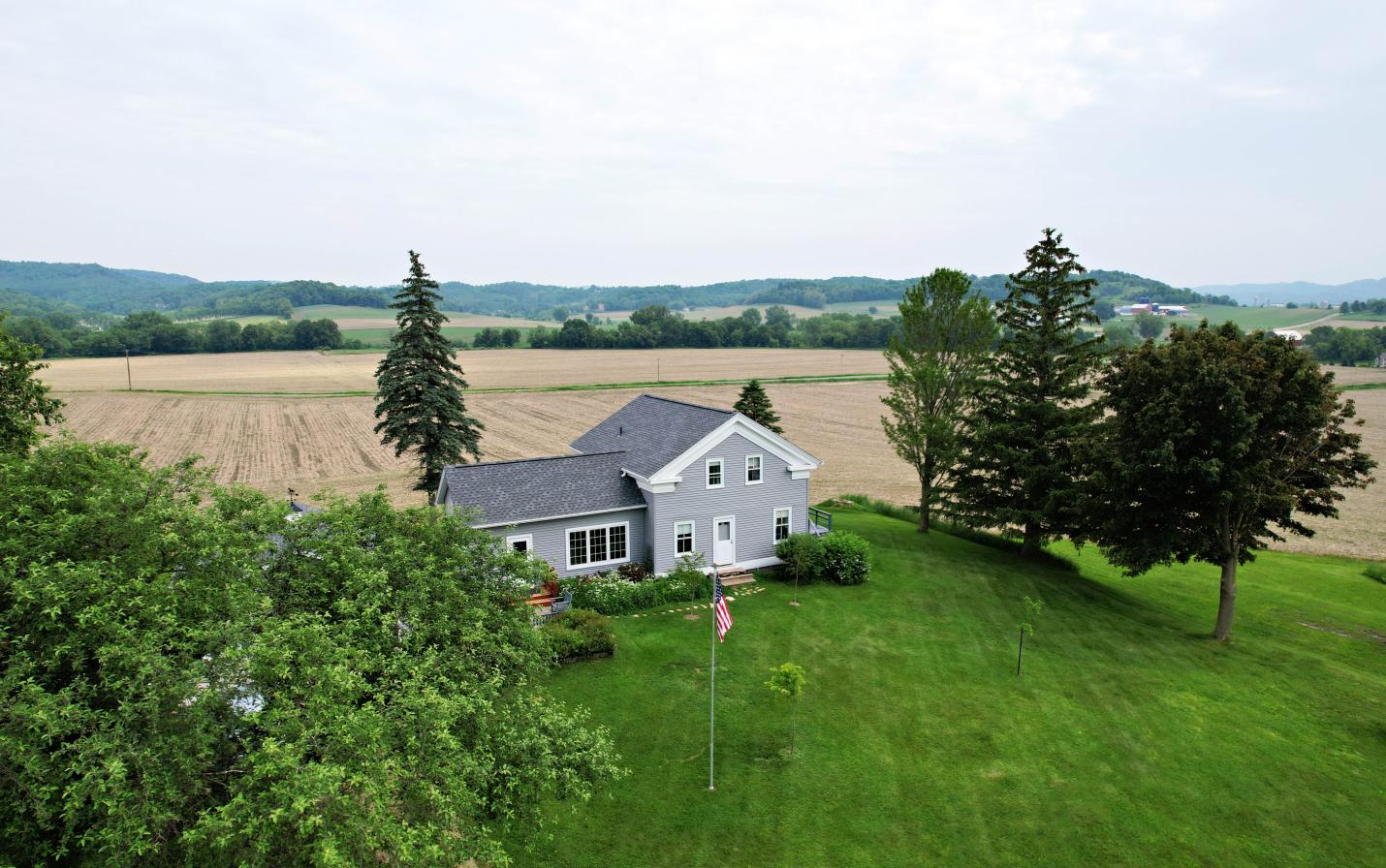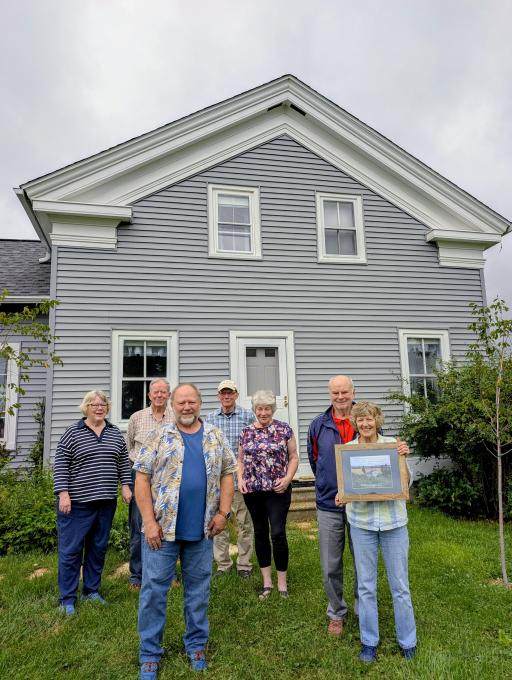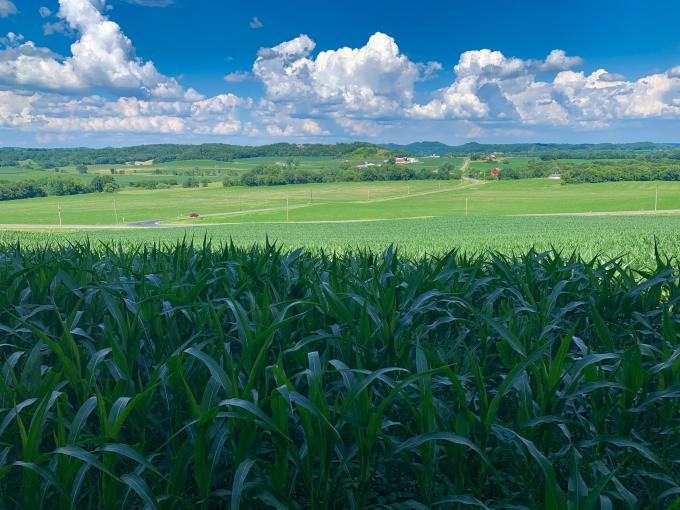
On January 22, 2004, Doris Michelson signed up for a membership to Mississippi Valley Conservancy. At that time, she had been thinking a lot about her farm in La Crosse County, a farm that had provided a lifetime of happy memories since the day she moved into the century-old farmhouse as a young bride in 1943. Doris had been thinking about what would happen to the farm in the future, and how to ensure it could continue to remain as farmland as so much of the surrounding landscape was being developed into residential lots.
The Conservancy was established for the specific purpose of working with private landowners to convey conservation easements to ensure the scenic beauty, wildlife habitat, and working farmland could be protected for future generations. Doris’ new membership to the Conservancy provided the opportunity for her to receive their newsletter, which described other landowners in the area who had protected their land through conservation easements, and Doris was always learning more and thinking about what the future would hold.
With a rich history of hard work and special family memories, the farmland had been in the Michelson family since 1879. Doris shared, “It is very good land, and the family wants to keep it… My husband and I arranged family picnics to different locations around this farm. That is one of many reasons each one of our children is devoted to it.” Doris passed in 2020 at the age of 103, without realizing her dream of ensuring the farm was protected. This summer, nearly two decades later, her five children, Jim, Bob, Mary, Elizabeth and Steve, made her dream a reality by conveying a conservation easement in memory of their parents.

(Photo: Standing in front of the homestead, the Michelson family celebrate the preservation of their family farm.
Left to right: Elizabeth Rusch, Jim Michelson, Steve Michelson, Bob & Julie Michelson, George & Mary Baumgartner)
Photo by Carol Abrahamzon.)
At the urging of her children and grandchildren, Doris kept a detailed record of her memories throughout the years. “From my kitchen window, I gaze out over the ever-changing seasonal scenery,” Doris reminisced. “Here I see the bare dark branches of winter, often covered with snow, change to the buds growing into the new leaves in spring and summer. Later they turn into the glorious reds, yellows, and gold of the fall. The fields, too, change from fall brown to winter white soon to be followed by light brown. Spring soon replaces this with the light green of the new crops. The deeper green of the growing corn, soybeans, or hay is soon followed by the fall show again. I have seen deer, coyotes, hawks, buzzards, eagles and turkeys as well as our domestic animals from this vantage point. One evening several years ago I looked up from the sink to see a pretty doe gazing at me with inquiring eyes.”
“When the children were growing up, we lived a busy farm life," Doris wrote. “We had cows, hogs, and sometimes chickens. We raised hay, corn, tobacco and strawberries to sell, so there was always plenty to do. My husband was a good farmer, but we often took time to picnic at some spot on the farm or perhaps have a wiener roast or marshmallow roast in the evening. From the time the children were quite small they loved going to the barn to "help" at chore time. They learned to shake up the bedding and put the milking machine straps on and take them off of the cows. They learned to wash the cows' udders for milking and eventually how to put the milking machines on and off and feed the cows.”

(Photo: Farmland preservation is a priority for the Michelson family, ensuring these rich fields are available for agricultural production far into the future. Photo by Chris Kirkpatrick.)
With their parents’ wishes in mind, her children worked with the Conservancy to convey a conservation easement to ensure that the scenic views from the farmhouse window, or for passers-by on the local roads, as well as opportunities to keep the land in agricultural production, will continue to be available to future generations. The land will continue to be privately owned, and the easement places limitations on future building construction and subdivision, regardless of who owns the land in the future. Abbie Church, Conservation Director for the Conservancy, noted a number of notable features of the property. “The soils on this farm are ideal for agricultural use, with some silt loam soils designated as prime farmland and others as farmland of statewide importance according to the federal register,” Church explained. “The family recently completed a pollinator planting with yellow coneflowers, bergamot, black-eyed Susan and other native wildflowers to support bees, butterflies and other wildlife. The Michelson’s farm also includes diverse woodlands, home to indigo bunting, scarlet tanager, and Baltimore orioles and a winding creek designated as a class I trout stream. The songbirds calling on the property are also noted in Doris’ memoirs; it was a delight to be able to visit the farm through her stories and memories.”
This new easement joins two other adjacent landowners who have protected their farmland with the Conservancy, creating a corridor of nearly 300 acres of protected farmland. This effort supports the Town of Hamilton and the La Crosse County comprehensive plans, both of which included goals of protecting open space and agricultural lands.
To learn more about conservation agreements which protect farmland, woods, wetlands, prairies and blufflands, visit our Conservation Easements page or email us at [email protected].
(Cover photo: Located in the Conservancy’s La Crosse River Priority Area, the Michelson family farm joins two other adjacent properties which have conservation agreements, creating a total of 284 contiguous acres of protected farmland and wildlife habitat. Photo by Karen Solverson.)